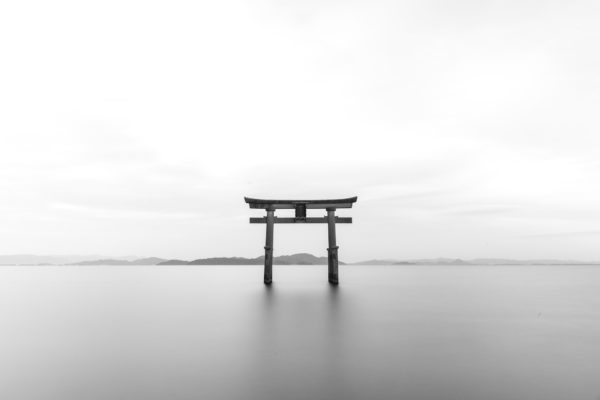Travel around Japan easier and cheaper with the Japan Rail (JR) Pass. Here are the answers to some commonly-asked questions about purchase and use of this advantageous Pass!
What is the Japan Rail Pass?
The Japan Rail (JR) Pass is a special pass issued by the Japan Railways (JR) Group to travelers visiting the country. With unlimited usage of all railway lines operated by the JR companies and even buses, streetcars, and ferries, the JR Pass is one of the easiest and most economical ways of traveling around the Japan archipelago.
Who is the JR Pass for?
Any visitor to Japan who is there for sightseeing purposes are free to purchase the JR Pass. Here are the two broad conditions that you’ll have to meet:
- You are a non-Japanese visiting the country for sightseeing purposes. In other words, you hold no special visa, and are allowed to stay in the country for 90 days as a temporary visitor.
- Japanese citizens who don’t reside in Japan, and are just visiting for sightseeing purposes.
Why should I buy a JR Pass?
While it is true that the JR Pass is not for everyone, it is generally right to say that it’s a bargain to get the Pass if you plan to travel widely around the country. Transportation can be one of the largest costs of traveling in Japan. For example, a single train ticket for a one-way trip from Shinjuku to Shibuya in Tokyo costs ¥160. Thus, if you plan to visit a few major sightseeing spots, transportation can easily cost up to ¥1,000 per day.
As such, purchasing a JR Pass is a good idea, not only because it can help you save on transportation costs, but it also makes it easier to use the trains and buses. Having a JR Pass eliminates the hassle of having to buy tickets every time you take the train, or the inconvenience of purchasing a commuter pass card.
Are there different types of JR Passes?
There are quite a few different types of JR Passes available, depending on your needs. For example, if you only plan to travel within Tokyo, purchasing the “JR Tokyo Wide Pass” is a better price option than the standard JR Pass.
Visit the JR Pass website (http://www.japanrailpass.net/) to learn about all the different types of Passes available. Here is a list of the more common ones.
- Standard JR Pass (all Japan)
- Hokkaido Rail Pass
- JR East Pass (covers the eastern prefectures like Aomori, Nagano, and Sendai)
- JR Tokyo Wide Pass
- JR West Rail Pass (covers the western prefectures like Osaka, Kyoto, and Nara)
- JR Kyushu Rail Pass (covers the southern prefectures like Fukuoka, Kumamoto, and Kagoshima)
What does the JR Pass cover?
First and foremost, the JR Pass covers most railway lines operated by the JR companies. That includes the monorail lines, as well as the shinkansen or bullet train lines. However, do note that there are several types of shinkansen trains, and you cannot use the JR Pass to take the 2 fastest types: the NOZOMI and MIZUHO trains.
The JR Pass also covers local bus routes in most major cities, but express highway buses operated by JR Bus are not covered. The Pass also covers the ferry operated by JR West that runs between Hiroshima and Miyajima in west Japan.
Is the Narita Express covered by the JR Pass?
The Narita Express is a special train line that runs from Narita Airport into central Tokyo, stopping at major stations such as Shinjuku, Shinagawa, Shibuya, and Tokyo stations. Rides on the Narita Express are covered by the JR Pass, so make sure you turn in your Exchange Order at the airport to get your JR Pass!
Similarly, the JR Pass covers the Nankai-Limited Express which runs between the Kansai International Airport and major train stations like Osaka, Tennoji, and Namba stations.
Can I use the JR Pass for the subways?
The subway lines in Tokyo as well as other major cities such as Osaka and Kyoto are run by a different company; hence you cannot use your JR Pass to take those lines. Similarly, train lines run by other companies, such as the Yurikamome line that connects Shingawa to Odaiba in Tokyo, or the Hankyu and Hanshin railway lines in West Japan, are not covered by the JR Pass.
When in doubt, bring your JR Pass to the station master’s office. The station attendant there will let you know if you can use the Pass.
How much is a JR Pass?
The price of the JR Passes differs depending on the type of Pass you purchase. Here are some examples:
- The JR West Kansai Area Pass costs ¥6,300 for a 4-day pass, while the standard nationwide JR Pass costs ¥29,110 for a 7-day pass. This is simply because the Kansai Pass can only be used in a smaller region of limited Prefectures.
- JR Passes for children usually cost half of an adult’s price.
- For JR Passes that include shinkansen or bullet train rides, you have the option of choosing between a Green Pass or an Ordinary Pass. The Green Pass allows you to book tickets in the Green Cars of the shinkansen, which are akin to First Class seating on an airplane.
How do I buy a JR Pass?
Purchasing a JR Pass is a 2-step process. First, you’ll have to purchase an Exchange Order from an associated tour agency in your home country. Visit any tour company to find out more, or simply order online by clicking the book now link below:
BOOK NOW
After you arrive in Japan, you can turn in your Exchange Order at any major JR station to receive and activate your JR Pass. Take note that you’ll need your passport to do this, so make sure to bring it along. This is to prove that you are in Japan on a temporary visitor visa, and for the staff to check that the name on your Exchange Order matches your passport identity.
Do note that all JR Passes have a usage limit (e.g. a 7-day pass is valid for 7 consecutive days). As such, the staff will ask when you’d like your JR Pass to be activated. If you’re staying in Japan for more days than the Pass’ limit, make sure to plan out your itinerary to fully maximize the Pass!
Can I get a JR Pass in Japan?
Usually, Exchange Orders can only be purchased outside of Japan, which means that if you are in Japan, there is no way to obtain the JR Pass.
However, the JR Group is running a trial until 31 March 2019, where Exchange Orders can be purchased at specific major JR stations. Do note that the prices of Exchange Orders sold in Japan are higher than those sold overseas!
For more information on this, click here.
How do I use the JR Pass?
To take a JR train, simply flash your JR Pass to the station attendant at the station master’s office. The office is usually located next to the ticket gates. The attendant will check your Pass and wave you through. Do note that you cannot use the Pass to go through the ticket gates like the rest of the commuters, so make sure you head to the lane where the station attendant is!
The procedure is similar for buses, just show your JR Pass to the driver when disembarking. You’ll see other commuters taking tickets from a little machine when boarding, but there is no need for you to do that if you have the Pass.
For the Miyajima ferry, show your JR Pass at the ticket gates and you’ll be able to board the ferry without problems.
Must I use the JR Pass on consecutive days?
Most types of JR Passes are for consecutive days, so once you activate the Pass, you have a limited number of days left that you can use it. However, there are some special passes which allow you to choose certain days during which to activate your Pass.
For example, the JR East Passes allow you to choose any 5 days out of a 14-day period in which your Pass is valid for use. This allows for much more flexibility in your planning, and there’s no rush to zip around the city trying to hit all the major sightseeing spots in a set number of days. Overall, a much more pleasant vacation!
Can I reserve seats on the shinkansen?
Yes! To do so, you have to visit any JR “Midori no madoguchi” ticket office. Simply look for a green sign of a man sitting on a reclining seat. While at the office, you can reserve a seat on the shinkansen at no cost. You’ll receive an additional ticket that you’ll have to show to the station attendant at the ticket gates, together with your JR Pass.
Do note that there is no need to reserve tickets for the shinkansen. You can choose to show your JR Pass to the station attendant, and board the shinkansen in any of the unreserved seat carriages. However, there is no guarantee that you’ll get a seat in these carriages, especially during busy periods or the holiday season. Therefore, it is recommended that JR Pass holders reserve a ticket so you can travel in peace and comfort.





